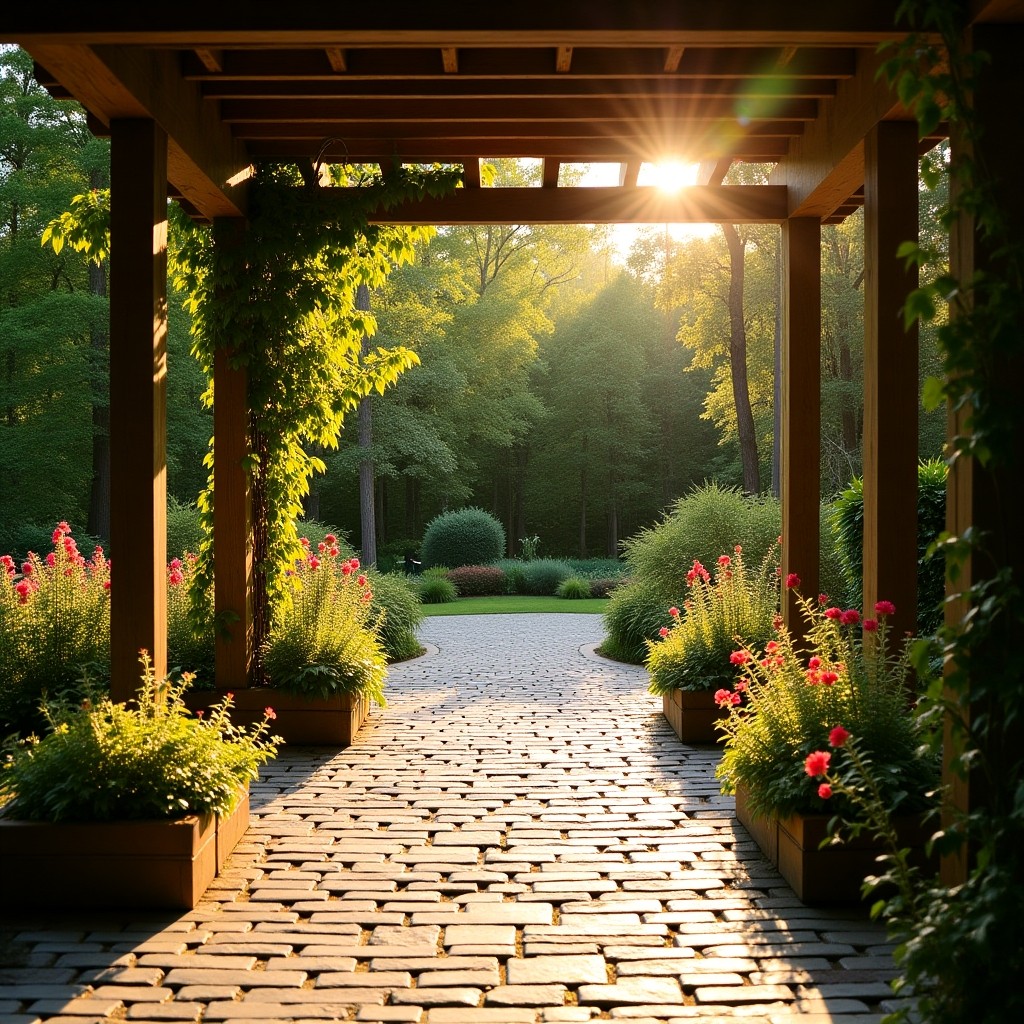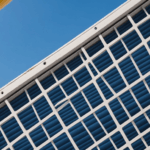Choosing between a patio and a deck for your outdoor spaces can be a pivotal decision in your renovation project. Whether you’re starting from scratch or remodeling an existing yard, understanding the benefits of each can help you make the right choice for your needs and lifestyle. Here, we’ll explore the distinct advantages that a patio offers in the patio vs. deck debate, helping you weigh your options with confidence.
A patio provides a versatile and aesthetic addition to your home with several benefits worth considering. One of its primary advantages is its ability to seamlessly integrate with the surrounding landscape. Patios are typically constructed at ground level, allowing them to blend naturally with the terrain and existing garden features, creating an inviting, open area that connects your indoor living space with your natural surroundings.
Another significant benefit of a patio is its durability. Constructed from materials such as stone, concrete, brick, or pavers, patios are known for their strength and long-lasting nature. Unlike wood decks, which may suffer wear from exposure to the elements, patios maintain their appearance over time with minimal effort. This longevity not only enhances their aesthetic appeal but also makes them an economically sound investment, as they often require fewer repairs and replacements in the long run.
In terms of design flexibility, patios offer a wide array of customization options. Homeowners can choose from numerous materials, colors, and patterns to suit their personal style and complement their home’s architecture. This ability to tailor the design makes patios particularly appealing in the patio vs. deck debate, as they allow owners to express their creativity and create a unique outdoor retreat.
Patios also offer a distinct advantage in terms of privacy. Being constructed at ground level means that they can be easily concealed with landscaping elements, such as hedges, fences, or pergolas. This not only enhances the aesthetic appeal of the space but also provides a secluded area for relaxation or entertainment.
Additionally, patios are generally more accessible. With their ground-level placement, they can easily accommodate wheelchair access and present fewer safety concerns for children and older adults, making them a suitable choice for families looking to create an inclusive outdoor space.
Here is a table comparing patios and decks in terms of material and design:
| Feature | Patio | Deck |
| Material Options | Stone, concrete, brick, pavers | Wood, composite, PVC |
| Design Flexibility | Highly customizable with various patterns and materials | Variety of finishes and styles available |
| Accessibility | Ground-level, generally easier to make accessible | May require steps, possible elevation differences |
| Durability | Highly durable with minimal maintenance | Varies by material, requires regular maintenance |
When you consider these benefits and their implications for your lifestyle, a patio can be an excellent choice for those looking to create a beautiful, resilient, and low-maintenance outdoor living space. As you ponder renovation tips and plan your project, weighing these advantages against those of a deck will bring you closer to making the best decision for your outdoor space.
Features of a deck
Decks provide a range of features that make them a popular choice for outdoor spaces, especially when considering the benefits in the patio vs. deck debate. Here are some key characteristics that set decks apart:
1. Elevation
- Unlike patios, decks are often elevated structures, which provides the opportunity for stunning views from above ground level. This elevation is particularly beneficial for homes built on uneven terrain or with sloping yards, where a patio might require extensive leveling work.
- Elevated decks create a natural extension of the indoor space and can accommodate transitions between different levels of a home, offering direct access from the living areas on the first floor.
2. Material Variety
- Decks are commonly constructed from wood, composite materials, or PVC. This variety allows homeowners to choose based on preferences for maintenance, appearance, and cost.
- Wood, while requiring more upkeep, offers a classic and natural aesthetic. Composite and PVC materials mimic the appearance of wood but come with added benefits of being more resistant to fading, staining, and warping.
3. Design Versatility
- The structural possibilities of a deck are vast. Homeowners can create multi-tiered platforms, incorporate built-in seating, or add planters and railing options. The design flexibility allows for personalization that can complement the architectural style of the home or create a distinct flair.
- Railing choices range from traditional wood to modern metal or glass, allowing for various stylistic expressions, as well as safety considerations.
4. Functionality as Entertainment Space
- Decks are often preferred as entertainment spaces due to their ability to support added features like outdoor kitchens, fireplaces, and hot tubs. Their structure is conducive to integrating these elements, offering a seamless and inviting environment for gatherings.
- Lighting options on decks are diverse, including built-in LED floor lighting, post cap lights, and stair lights, which enhance the ambiance and safety during evening use.
5. Adaptability to Climate
- Decks can be designed with shade structures like pergolas or awnings, providing relief from the sun and allowing for comfortable use in various weather conditions.
- Additionally, the elevation of a deck can help promote airflow and create a cooler spot during warmer months, distinguishing it from ground-level patios that might retain heat.
By considering these features of decks, you can better assess whether it’s the right option for your specific needs and preferences in your renovation project. Recognizing how these attributes align with your lifestyle and aesthetic goals will help you make an informed decision.
Cost comparison
When it comes to comparing the costs of patios and decks in the ongoing debate of which outdoor space is more suitable, several factors need to be considered to understand which option aligns best with your budgetary constraints and project goals. Often, the initial financial outlay can vary significantly between the two, impacting your decision-making process in the patio vs. deck discourse.
Firstly, from a cost standpoint, patios tend to be more economical upfront due to their generally simpler installation process. Constructed at ground level, they do not require the additional structural support that decks do, such as pilings and framework, which can notably increase labor expenses. Material selection further influences costs; opting for basic concrete for a patio, for instance, can be more budget-friendly compared to upgraded stone or pavers, albeit upgrading these materials can offer enhanced aesthetic appeal and durability.
In contrast, decks are usually more expensive initially, primarily due to their complexity. Since they are often elevated, they necessitate a sturdy substructure, especially when built on sloped or uneven terrain. The choice of materials also contributes to the cost differential; traditional wood decks might present an affordable option, but they require consistent maintenance to keep weathering and decay at bay, potentially escalating long-term expenses. Alternatively, composite or PVC materials, while pricier, offer the benefit of reduced upkeep and increased longevity, potentially lowering overall maintenance costs over time.
Delving deeper into cost assessment, consider the long-term financial implications associated with maintenance and durability. While patios demand less routine care, minor repairs or updates, like repointing pavers or sealing surfaces, might still surface. Meanwhile, decks, especially wooden ones, require regular treatments, staining, and possibly more significant repairs if structural elements degrade, which can lead to substantial expenditure over years.
Additionally, it’s important to factor in the potential impact on property value when evaluating cost. A well-maintained deck, particularly those featuring advanced materials and aesthetic enhancements, can increase a home’s resale value, potentially offsetting the initial higher costs. Similarly, a carefully designed patio, with luxurious features like built-in seating or intricate landscaping integration, can equally boost curb appeal and value, making it a compelling investment.
Ultimately, careful consideration of these cost elements within your renovation tips can guide you towards making a financially informed decision in the patio vs. deck selection process. Balancing upfront installation expenses against ongoing maintenance requirements and future value enhancement will help you determine the most cost-effective and fitting choice for your specific outdoor spaces and lifestyle objectives.
Maintenance requirements
Maintaining your outdoor space is a crucial factor when deciding between patios and decks. Both require upkeep to ensure they remain safe, functional, and visually appealing, but the nature and frequency of this maintenance can differ significantly between the two, potentially influencing your decision on which outdoor living area best suits your needs.
Patios, constructed from robust materials like stone, concrete, or brick, generally demand less regular maintenance compared to decks. They require occasional cleaning to remove dirt, leaves, and mildew. This can typically be achieved with a simple sweep or a power wash. Additionally, depending on the material used, patios might need the joints to be repointed or sealed every few years to prevent weed growth and water infiltration. Sealing stone or concrete periodically can also help maintain their appearance and protect from stains or damage caused by freeze-thaw cycles. However, these tasks are minimal compared to the regular upkeep involved with decks, which can make patios appealing for those seeking low-maintenance outdoor spaces in the patio vs deck decision-making process.
Decks, particularly those made of natural wood, require a more committed maintenance schedule. To preserve the wood’s integrity and appearance, regular cleaning, staining, and sealing are essential. This routine helps protect the deck from moisture, mold, and UV damage, which can lead to rotting, warping, or splintering if neglected. While these maintenance tasks can extend the lifespan of a wood deck, they also entail a commitment of time and resources.
On the other hand, decks made from composite materials, while initially costlier, offer the advantage of lower ongoing maintenance. These materials are designed to resist fading, staining, and mold, negating the need for frequent staining or sealing. A simple cleaning with soap and water or a power wash suffices to retain their appearance, making composite decks a potentially attractive option if you desire the aesthetic of wood without its associated maintenance demands.
Moreover, regardless of the material, decks require regular inspections to ensure safety, specifically examining for loose boards, protruding nails, or weakened structures. These checks are crucial, particularly for elevated decks, to prevent possible accidents and maintain your deck’s structural integrity.
Ultimately, the choice between a patio and a deck often comes down to the level of maintenance you’re willing to accept as part of your lifestyle and the other advantages each option offers for your renovation project. While patios may offer peace of mind with their durability and minimal upkeep, the distinct advantages of a deck in terms of elevation and entertainment possibilities might persuade you otherwise, especially if you’re prepared for the associated maintenance responsibilities. Balancing these considerations along with budget and design preferences will help you choose the ideal setup for your outdoor living space.
Climate considerations
When determining which option is more compatible with your climate, it’s important to weigh how patios and decks respond to the weather conditions in your area. Each has unique characteristics that can affect their suitability for different climates, influencing your decision in the patio vs. deck debate.
Patios, being constructed at ground level with materials like concrete, brick, or stone, generally excel in areas experiencing mild seasonal changes. Their solid, dense surfaces tend to absorb and retain heat, making them potentially less comfortable during hot summers if not properly shaded. However, this characteristic can be advantageous in cooler climates where the retained warmth can extend the usability in the cooler seasons. Additionally, materials like stone and concrete are less susceptible to warping and weather-related damage, providing resilience to fluctuations in temperature and retaining their structural integrity through freeze-thaw cycles.
On the other hand, decks, often elevated and built from materials such as wood, composite, or PVC, can be more adaptable to a variety of weather conditions. In regions with significant rainfall or snow, a deck’s elevation facilitates better drainage and airflow, preventing water pooling and related damage. However, this elevation can also expose a deck to more extreme weather conditions, such as high winds or intense sunlight, which might necessitate more comprehensive maintenance efforts to preserve their condition. Composite and PVC materials are especially favorable in such climates due to their resistance to moisture and warping, offering a lower-maintenance alternative to traditional wood.
In particularly hot or sunny climates, incorporating shade structures is a beneficial renovation tip for both patios and decks. Pergolas, awnings, or even strategically planted trees can provide necessary relief from the sun, making the outdoor space more bearable during peak summer months. This feature not only enhances comfort but also protects the material surfaces from excessive UV damage.
Considering the typical weather patterns in your area and how each type of structure fares will guide you toward a choice that both complements your local climate and aligns with your lifestyle needs. From the daily enjoyment of your outdoor space to its long-term maintenance requirements, factoring climate considerations will ensure that your patio or deck remains a welcoming and functional part of your home.
Ultimately, the choice between a patio and a deck involves balancing multiple factors, such as terrain, budget, maintenance preferences, climate, and intended use. By carefully considering the features and benefits of each option, you’ll be well-equipped to make a decision that enhances your outdoor spaces and enriches your home life. Whether you choose the timeless elegance and minimal upkeep of a patio or the elevated views and dynamic designs of a deck, your new outdoor living space will surely become a cherished extension of your home.










